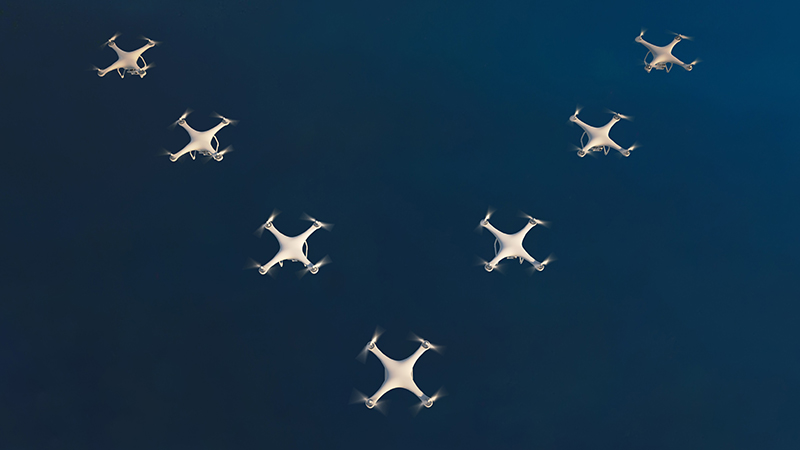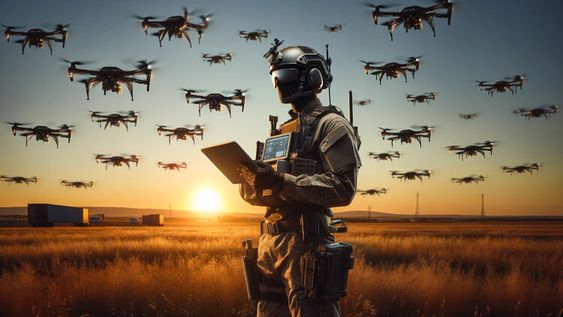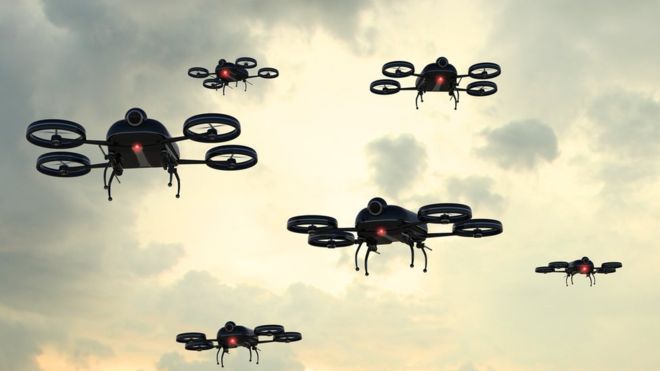Introduction
In an age where technology evolves at an unprecedented pace, collaborative drone swarms are emerging as a groundbreaking innovation with the potential to transform various industries. By mimicking the collective behavior of natural swarms, such as flocks of birds or schools of fish, these drones work together seamlessly to complete complex tasks more efficiently than any single unit could. From search and rescue missions to environmental monitoring and precision agriculture, the applications are vast and varied. As we delve into the future of this technology, we’ll explore its benefits, challenges, and the exciting possibilities that lie ahead.
What is Swarm Technology? https://www.swarmtechnology.us/
Swarm technology involves multiple drones working together to complete missions more efficiently than a single unit could achieve alone. Each drone in a swarm communicates with others, sharing real-time information about their surroundings and adapting to changes as they occur. This collective intelligence not only enhances efficiency but also enables the swarm to optimize routes, cover larger areas, and respond dynamically to obstacles or challenges.
By utilizing sophisticated algorithms, drones can make decisions collaboratively. For instance, if one drone detects an obstacle, it can communicate this information to others, prompting them to adjust their paths. This adaptability is crucial in scenarios where quick decisions can significantly impact outcomes, such as search and rescue missions or environmental monitoring.https://afconesinfra.in/our-sectors/

Applications of Collaborative Drones
- Search and Rescue Operations
During emergencies, swarm drones can quickly cover vast areas, conducting searches for missing persons or assessing disaster-stricken zones. Their ability to work in unison allows them to relay crucial information back to rescue teams, significantly improving response times. For example, a swarm can systematically search a region, with each drone scanning a different section and sharing its findings in real-time. - Agricultural Monitoring
In agriculture, farmers can greatly benefit from swarm technology as drones monitor crop health, assess soil conditions, and manage irrigation. A swarm of drones analyzes data from various angles and heights, providing farmers with comprehensive insights that enable them to optimize yields and resource use. Moreover, by detecting issues early, such as pest infestations or nutrient deficiencies, farmers can take timely action, thereby enhancing productivity and sustainability. - Environmental Monitoring
Collaborative drones play a vital role in monitoring environmental changes effectively. They can track deforestation, wildlife migrations, and pollution levels. By collecting data from multiple locations simultaneously, swarms offer a clearer and more comprehensive picture of ecological impacts. For instance, a swarm can monitor the health of a forest by analyzing vegetation cover and identifying areas at risk of degradation. - Infrastructure Inspection
Drones are increasingly utilized to inspect critical infrastructure, including bridges, power lines, and pipelines. Swarm technology allows these drones to cover extensive structures quickly and thoroughly. By using synchronized flight patterns, they can identify potential issues, such as structural damage or leaks, conducting detailed assessments more efficiently than traditional inspection methods. This proactive approach not only saves time but also enhances safety by allowing for timely repairs. - Entertainment and Art
Swarm technology has even made its mark in the arts, where drone light shows captivate audiences worldwide. With multiple drones working together, they can create intricate patterns and formations that dazzle viewers. This innovation adds a new dimension to entertainment, transforming how we experience performances and celebrations.
Challenges Ahead
While the potential of collaborative drones is immense, several challenges must be addressed:
- Communication and Coordination: Ensuring seamless communication between drones in real-time is crucial for effective swarm behavior. Advanced algorithms and robust communication systems play essential roles in facilitating this interaction. Without reliable communication, swarms may struggle to maintain coordination, leading to inefficiencies.
- Regulation and Safety: As drone swarms become more prevalent, regulatory frameworks must evolve to ensure safety and privacy. Authorities need to create guidelines that balance innovation with public safety concerns. This is especially important in densely populated areas where the risk of accidents could rise with increased drone activity.
- Technology Costs: Developing and deploying swarm technology can be expensive. The cost of advanced drones , software, and infrastructure may pose challenges for widespread adoption. However, as technology advances and becomes more accessible, we can expect these costs to decrease, allowing various industries to benefit from swarm capabilities.
The Future of Swarm Technologyhttps://www.mdpi.com/2504-446X/8/7/320#:~:text=2.-,Formation%20Control%20Problem,flying%20in%20a%20specified%20formation.
As technology continues to advance, collaborative drones will likely gain even more capabilities. Ongoing research in artificial intelligence, machine learning, and robotics promises to enhance swarm behaviors and applications. For example, future drones may employ machine learning to improve their decision-making processes, enabling them to adapt to new environments or tasks more effectively.
The integration of these technologies holds the potential to revolutionize industries and improve our ability to tackle complex challenges. We might see swarm drones playing pivotal roles in disaster relief, precision agriculture, and environmental conservation, transforming how we approach these pressing issues.

In conclusion, collaborative drones represent a fascinating intersection of technology and nature-inspired solutions. As we continue to explore their potential, the future of swarm technology looks incredibly promising. It will pave the way for innovative applications that reshape how we approach various tasks in our daily lives. Whether in agriculture, disaster response, or entertainment, the collaborative power of drones is set to make a significant impact in the years to come.https://afconesinfra.in/contact/

